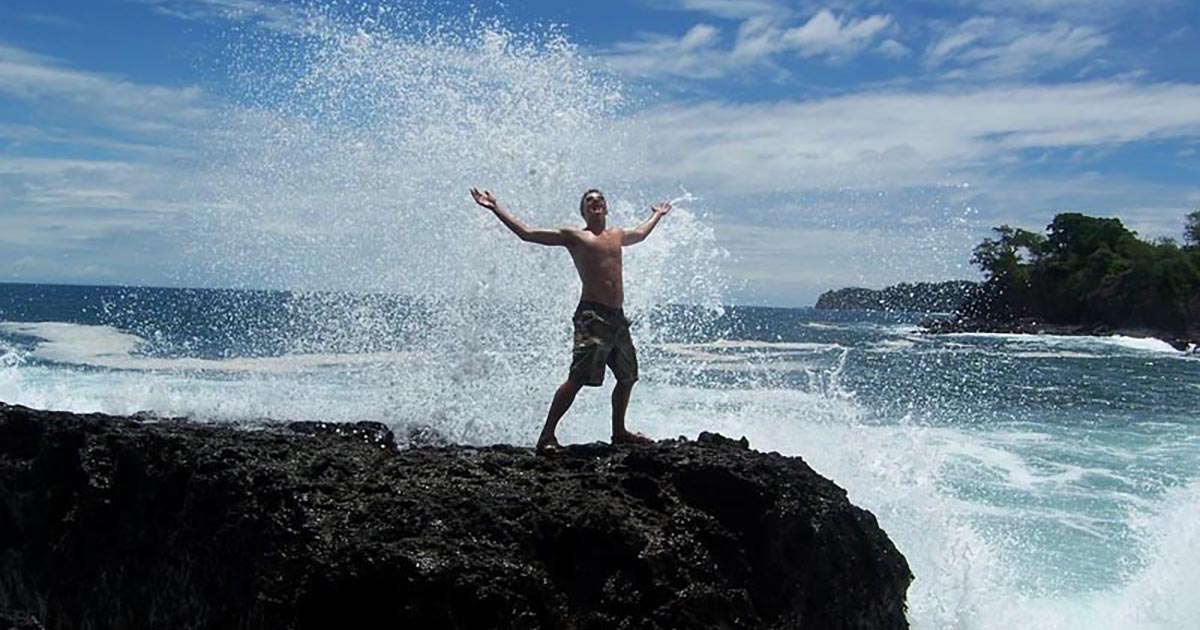New Tool for Exploitation of Wave Power Without Damaging the Environment

In the search for sustainable power generation alternatives, renewable marine energies are considered of great strategic interest towards the decarbonization and fight against climate change. However, the full potential of energy from waves, currents and wind has yet to be tapped. One of the non-technological obstacles hindering its development concerns the consenting process; one factor affecting the process is current uncertainty about how the wave energy converters interacts with the environment and the impacts that may arise.
The AZTI technology center, a member of the BRTA alliance, works in this area with the aim of using its knowledge to create new technologies that can further progress in the development of renewable energies. It has accordingly developed a new tool to assess the ecological risk of wave energy converters, called the WEC-ERA Tool.
“This is an open-access tool for managers, decision-makers and industry (and potentially any other interested party) to assess the environmental risks associated to new wave energy projects, taking into account the potential impacts of such systems on natural ecosystems,” says tool developer Ibon Galparsoro, an AZTI researcher in the area of environmental management of seas and coasts.
The solution was conceived in the context of the RENOGUIP project (meant to develop and implement new decision-making tools for marine spatial planning of renewable energies, financed by the Gipuzkoa Provincial Council) and the WESE project, funded by the European Union through the European Maritime and Fisheries Fund (EMFF) and coordinated by this Basque technology centre.
Holistic assessment using an intuitive tool
The AZTI application evaluates how three different wave power conversion technologies affect the ecosystem: oscillating water column, oscillating wave surge converters and wave turbines. The system addresses all phases of the lifecycle of those power conversion technologies, from installation to exploitation and subsequent dismantling.
This tool is intuitive and easy to use. The characteristics of the proposed installation are entered, i.e. the number of units, total authorised surface, installed production capacity in megawatts, project lifespan in years and area reserved for the equipment, to obtain an estimate of the project’s size.
“With a few clicks, the types of pressure, probability and intensity are then defined and characterised, and eventual pressures on the ecosystem, habitats and species are taken into account,” Galparsoro explains.
The solution specifically considers how native bird, mammal, fish, reptile and cephalopod species might be affected by the installation of conversion systems. The WEC-ERA Tool also addresses possible impacts on the seabed.
“The analysis result is immediate. The tool shows a graph indicating pressures that may be produced by wave power harnessers and ecosystem features that may be altered by each of the technologies during each phase of the respective lifecycle. All the assessment are based on the Marine Strategy Framework Directive,” the AZTI researcher adds.
An ocean to discover
Marine renewable energies (MRE) have gained momentum around the world due to the need to develop safe energy sources that can potentially combat the effects of climate change. But to ensure proper exploitation of an industry as new as MRE, besides resolving the technical and financial problems inherent to its development, solutions must be provided for potential environmental impacts caused by the installation, operation and dismantling of the associated structures.
“Due to its incipient state of development and the fact that there are no commercial wave farms, there is a significant lack of knowledge with respect to uncertainty about the eventual environmental impact of technologies meant to harness energy in the sea, so it is therefore essential to create tools that can predict the ecological risk of such projects,” Galparsoro says.
In this regard, the tool developed by AZTI is part of a bigger system called VAPEM, which aims to achieve integrated understanding, addressing not just wave and wind power but also issues associated to usage conflicts and ecological risks of different marine activities with respect to services provided by the marine ecosystem (food, raw materials, wellness).
“AZTI has been conducting studies for more than a decade on the environmental impact of marine energies, by means of operational oceanographic studies that have served to evaluate wave resource availability and the selection of appropriate locations,” he concludes.
As a result of the technology centre’s specialisation in this area, unique infrastructures have been developed in the Basque Country, such as the Biscay Marine Energy Platform (BiMEP), promoted by the Basque Energy Board (EVE) of the Department of Economic Development, Sustainability and Environment.

